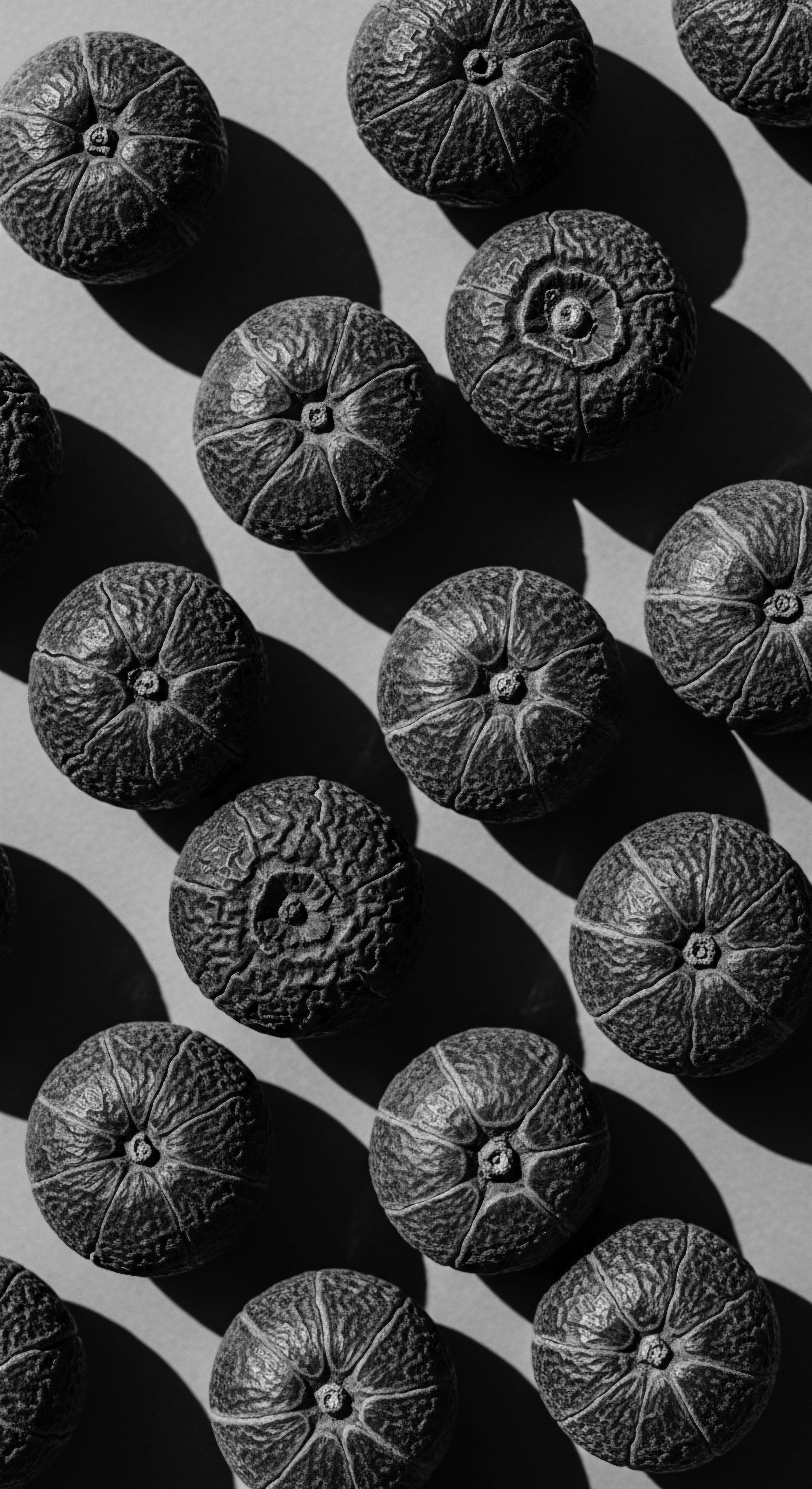
Roots
The very fibers that crown our heads, particularly those blessed with the glorious spirals and resilient coils, carry whispers of antiquity. Each strand, a living testament, holds not merely genetic code but also the indelible imprint of generations, a profound chronicle of human experience. To truly grasp the enduring connection between the texture of one’s hair and the perceived standing within society, one must first listen to the echoes from the source, tracing the lineage of this relationship through the deepest currents of human heritage. This is not a mere academic exercise; it is an intimate conversation with the past, a recognition of how our ancestors navigated the intricate landscapes of identity, community, and power, often with their very crowns as a visible declaration.
Before the imposition of external ideals, across various African societies, hair was a profound visual language, a vibrant medium of communication. The intricate patterns, the meticulously crafted styles, the rich adornments—all conveyed a wealth of information about an individual’s clan, marital status, age, wealth, spiritual beliefs, and even their occupation. Hair was never simply an aesthetic choice; it was a living, breathing symbol, an extension of the self and a marker of belonging.
The communal rituals surrounding hair care, often passed down through matriarchal lines, solidified social bonds and transmitted cultural wisdom. These practices were not fleeting trends but deeply ingrained traditions, rituals of care that honored the very spirit of the hair and, by extension, the spirit of the community.
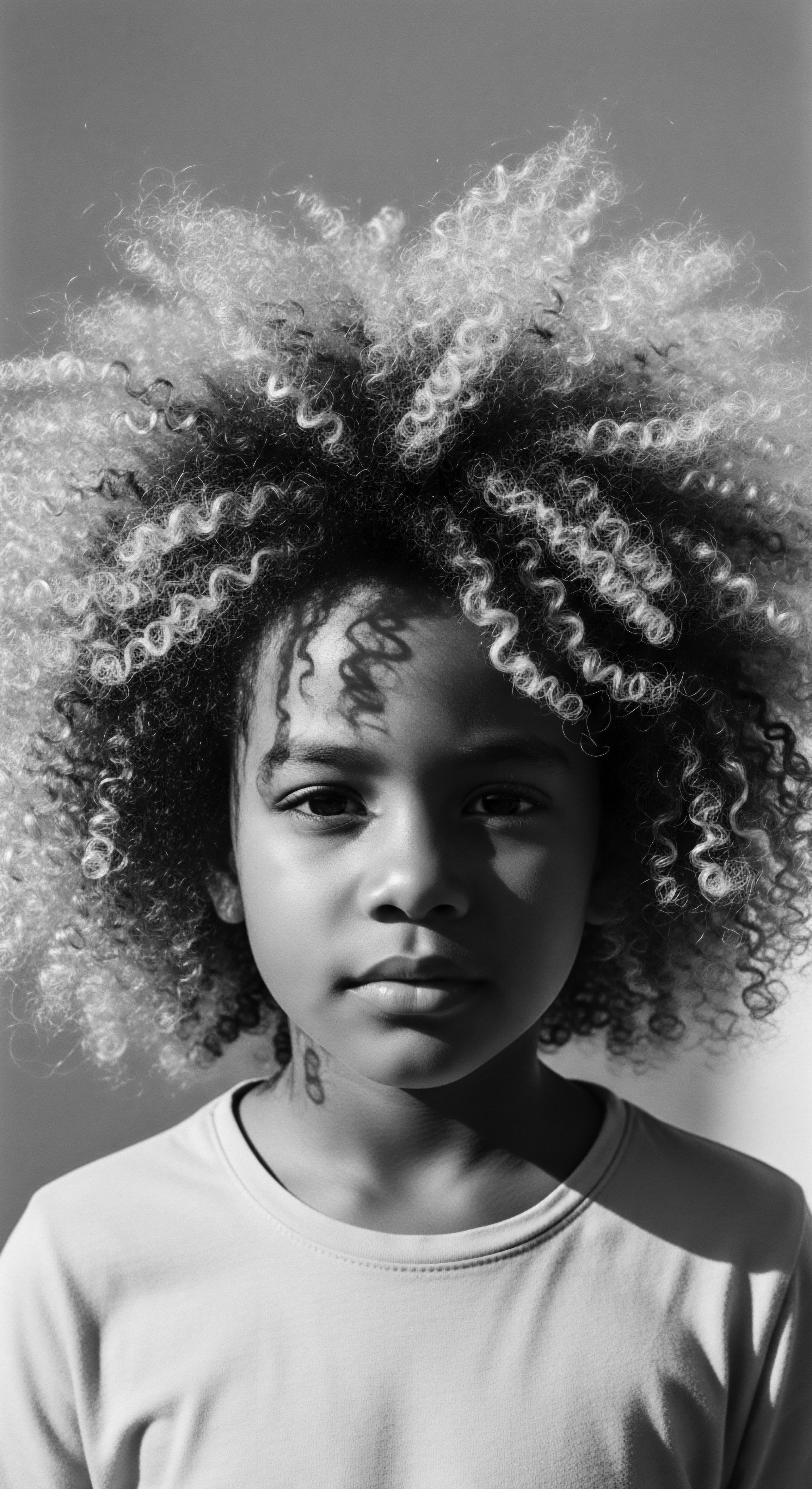
Anatomy of Identity ❉ The Textured Strand
To understand the societal interpretations of textured hair, we must first appreciate its singular biological characteristics. Unlike straight hair, which typically grows in a circular cross-section, textured hair exhibits an elliptical or even flat cross-section, causing it to coil and curl. This unique shape, coupled with the way keratin proteins arrange themselves, gives rise to the remarkable strength, elasticity, and often, dryness that distinguish it.
From an ancestral perspective, these qualities were not deficiencies but adaptations, enabling hair to offer insulation, protection from the sun’s harsh rays, and a canvas for elaborate, long-lasting styles. The natural tendency of these strands to intertwine and hold form lent itself perfectly to the creation of sculptural coiffures that could last for weeks, minimizing daily manipulation and preserving the integrity of the hair in demanding climates.
Across ancient African societies, hair was a living, visual language, conveying deep societal information and spiritual connections.
The very structure of textured hair allowed for the development of sophisticated styling techniques that served practical and ceremonial purposes. The ability to create braids, twists, and locs was not just about adornment; it was about protecting the scalp, maintaining hygiene, and signifying one’s place within the collective. The science of hair, as we understand it today, often affirms the intuitive wisdom of these ancestral practices, revealing how seemingly simple acts of braiding or oiling were, in fact, highly effective methods for preserving hair health and promoting growth.

Early Markers of Distinction
In many pre-colonial African societies, hair styling was a highly specialized craft, often performed by elders or skilled artisans who held respected positions within the community. The complexity and artistry of a hairstyle could indicate a person’s social standing or a significant life event. For instance, among the Maasai people, elaborate braids and ochre-dyed hair signified warrior status or coming-of-age ceremonies.
Similarly, in the ancient kingdom of Benin, the royal court adorned their hair with intricate coral beads, each bead a symbol of wealth and power, directly linking hair ornamentation to the highest echelons of society. These practices underscore a universal truth ❉ the human desire to signify status and identity through visible means, with hair serving as a primary, often sacred, canvas.
The communal nature of hair care, too, played a significant role in social cohesion. Gathering to braid or adorn hair was a time for storytelling, for transmitting oral traditions, and for strengthening familial bonds. This collective care reinforced the idea that one’s appearance, including one’s hair, was not solely an individual concern but a reflection of the community’s collective well-being and shared heritage. The historical records, though often fragmented by colonial disruptions, point consistently to a reverence for textured hair as a symbol of beauty, strength, and cultural pride.
| Cultural Group/Region Yoruba (Nigeria) |
| Hair Practice/Style Elaborate threaded styles (e.g. 'Shuku', 'Dada') |
| Associated Social Status/Meaning Spirituality, royalty, wisdom, age, marital status. Complex styles often reserved for elders or chiefs. |
| Cultural Group/Region Maasai (East Africa) |
| Hair Practice/Style Ochre-dyed braids, sometimes shaved patterns |
| Associated Social Status/Meaning Warrior status, initiation rites, age-set identification. Distinct styles for men and women. |
| Cultural Group/Region Himbe (Namibia) |
| Hair Practice/Style 'Otjize' paste (ochre, butter, herbs) on locs |
| Associated Social Status/Meaning Beauty, spiritual connection, protection from sun. Girls and women wear distinct styles indicating age and marital status. |
| Cultural Group/Region Ancient Egypt |
| Hair Practice/Style Wigs, braids, extensions with elaborate adornments |
| Associated Social Status/Meaning Cleanliness, wealth, protection from sun, religious significance. Pharaohs and nobility wore highly stylized wigs. |
| Cultural Group/Region Hair practices across African societies historically served as potent visual markers of identity, status, and spiritual connection. |

Ritual
Stepping from the foundational understanding of textured hair’s innate qualities, we now approach the living traditions that have shaped its journey through time. This exploration is a gentle invitation into the intimate spaces where techniques and methods for caring for and styling textured hair have been honed, passed down, and redefined across generations. It is a testament to the resilience of ancestral wisdom, a quiet affirmation of how heritage continues to guide our hands as we tend to these unique strands. The care rituals, often imbued with deep cultural significance, represent a continuous dialogue between the past and the present, a recognition that the physical act of hair care is also an act of self-preservation and cultural affirmation.
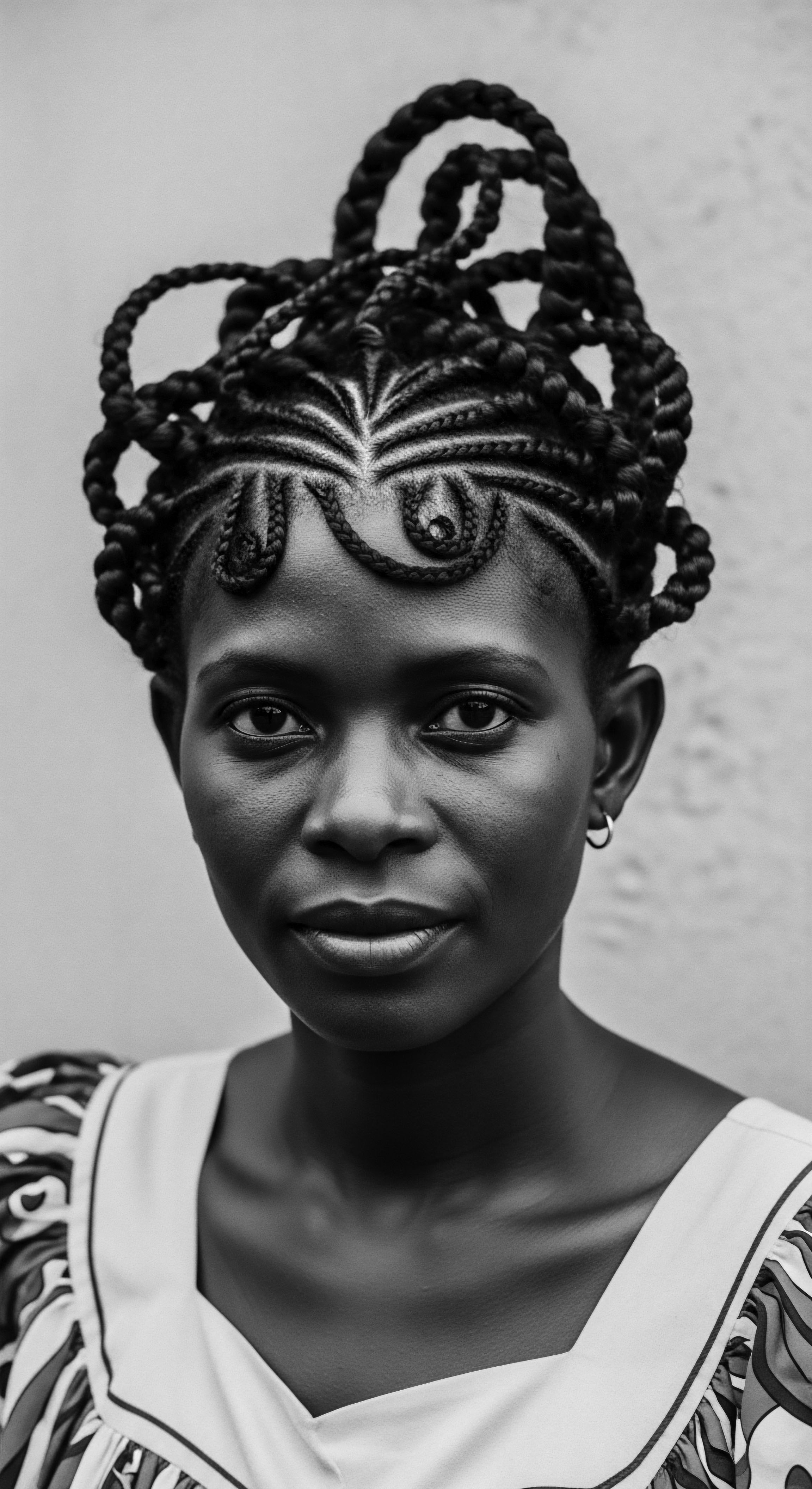
Protective Styles and Ancestral Ingenuity
The creation of protective styles stands as a monumental testament to ancestral ingenuity. These styles, such as braids, twists, and cornrows, were not merely decorative; they served a vital purpose in preserving hair health, especially in environments where daily manipulation could lead to breakage. By tucking away the ends of the hair, these styles minimized exposure to environmental elements and reduced mechanical stress.
This practice, refined over millennia, reflects a profound understanding of hair biology long before modern science articulated the mechanisms. The techniques, often complex and requiring considerable skill, were typically learned within familial or communal settings, ensuring their continuity through oral tradition and hands-on teaching.
The intricate art of protective styling, passed down through generations, embodies ancestral wisdom for hair preservation.
The historical context of these styles often intertwines with periods of both prosperity and adversity. During the transatlantic slave trade, for instance, enslaved Africans ingeniously used cornrows not only as a means of survival, hiding rice grains and seeds within the braids to sustain themselves and plan escapes, but also as a way to preserve a connection to their distant homes and cultural identity (Byrd & Tharps, 2001). This poignant example powerfully illuminates how hair, even under the most brutal conditions, remained a conduit for heritage, a silent act of defiance and a marker of dignity. The very act of maintaining these styles, often in secret, was a quiet assertion of selfhood against a system designed to strip away identity.
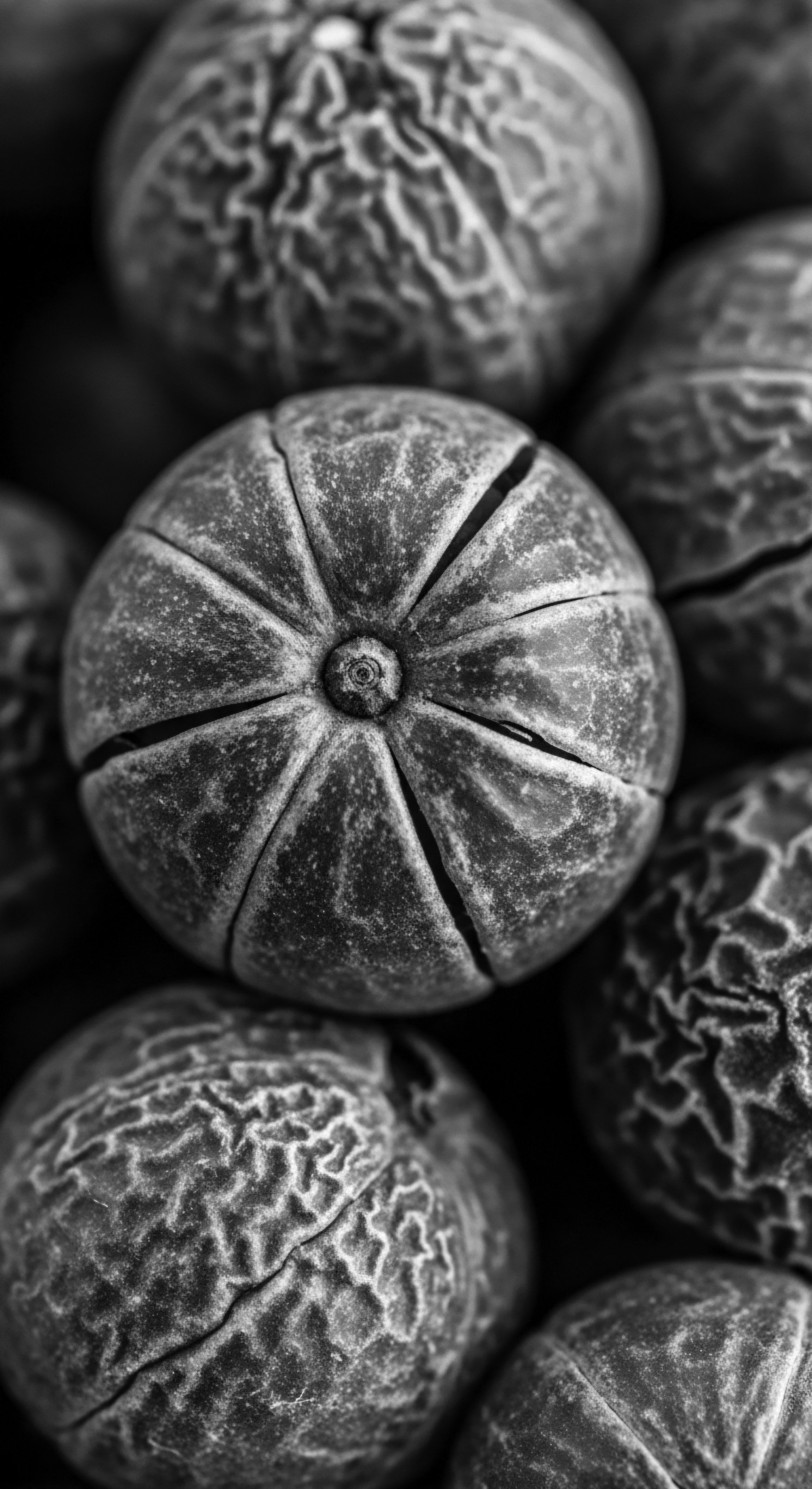
The Tools and Their Echoes
The tools employed in textured hair care also possess a rich lineage. Before the advent of mass-produced combs and brushes, natural materials served the purpose. Bone, wood, and even thorns were fashioned into implements for parting, detangling, and styling.
These tools were often handcrafted, sometimes adorned with carvings that carried symbolic meanings, linking the physical act of grooming to spiritual or cultural beliefs. The transition from these ancestral tools to modern implements, while offering convenience, sometimes severed the deeper connection to the material culture of hair care.
- Combs ❉ Historically carved from wood or bone, used for parting and detangling, often with wide teeth to respect the hair’s coiled nature.
- Picks ❉ Employed to add volume and shape to Afro styles, becoming particularly prominent during the Black Power movement as symbols of cultural pride.
- Thread ❉ Used in African threading techniques, a method of stretching and protecting hair without heat, preserving moisture and length.
- Pins and Adornments ❉ Cowrie shells, beads, and precious metals were used not just for decoration but also to signify status, marital availability, or spiritual protection.
The evolution of styling practices also reflects societal shifts. The early 20th century saw a widespread adoption of chemical relaxers, a response to prevailing beauty standards that privileged straight hair. This era represented a complex negotiation of identity, where the desire for social acceptance often led to the suppression of natural texture. Yet, even within this period, communities found ways to adapt, developing sophisticated pressing techniques and styling methods that, while altering the hair’s natural state, still retained a connection to communal beauty rituals.
Today, there is a powerful reclamation of natural textures, a conscious decision to honor the heritage of coiled and kinky hair. This movement is not simply about aesthetics; it is a profound act of self-acceptance and a rejection of imposed beauty norms. It is a return to the ritualistic care that respects the hair’s inherent qualities, often drawing inspiration from ancestral practices of moisturizing, protective styling, and gentle manipulation. The resurgence of traditional ingredients and techniques, often validated by contemporary scientific understanding, closes a historical loop, affirming the wisdom passed down through generations.
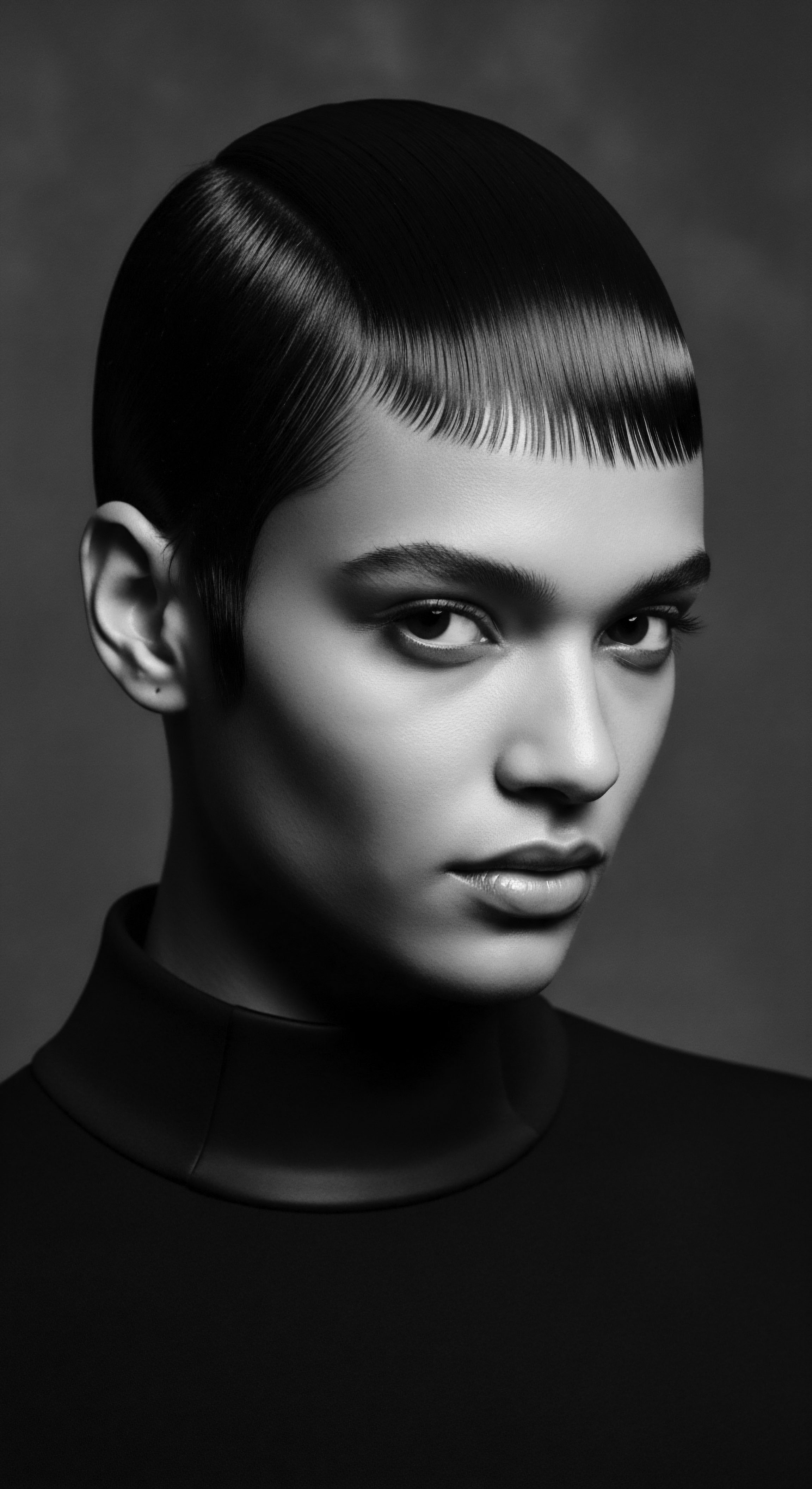
Relay
As we move from the intimate rituals of care to the broader societal currents, a deeper question emerges ❉ How has the enduring connection between textured hair and social standing shaped, and been shaped by, the very narratives of cultural identity and collective destiny? This final passage invites us to consider the intricate dance between individual expression and systemic forces, where hair becomes a profound site of both oppression and powerful resistance, a testament to the resilient spirit of heritage. Here, science, culture, and historical nuance converge, offering a multi-dimensional lens through which to comprehend the complexities of this relationship.

The Weight of Perception ❉ Hair and Oppression
The historical denigration of textured hair is inextricably linked to systems of power and subjugation, particularly the transatlantic slave trade and subsequent colonial enterprises. As African people were forcibly displaced and enslaved, their hair, once a symbol of dignity and connection, became a target for systematic erasure and dehumanization. Forced head shaving, the imposition of head coverings, and the widespread promotion of European beauty standards served to strip individuals of their cultural identity and enforce a rigid social hierarchy. This process was not accidental; it was a deliberate strategy to dismantle existing social structures and psychological resilience.
Post-emancipation, the legacy of these oppressive ideals continued to exert a powerful influence. For many generations, social mobility and acceptance within dominant society were often perceived as contingent upon conforming to straight hair aesthetics. This led to the widespread use of chemical relaxers, hot combs, and other methods to alter natural hair texture, often at considerable physical and emotional cost. The societal pressure to straighten one’s hair was a direct manifestation of a social hierarchy that placed straightened hair at the pinnacle of respectability, while natural textured hair was relegated to the lowest rung, often associated with perceived “unruliness” or “lack of civility.” This pervasive societal bias, deeply rooted in historical prejudice, became a significant barrier to economic and social advancement for many Black individuals (Banks, 2000).
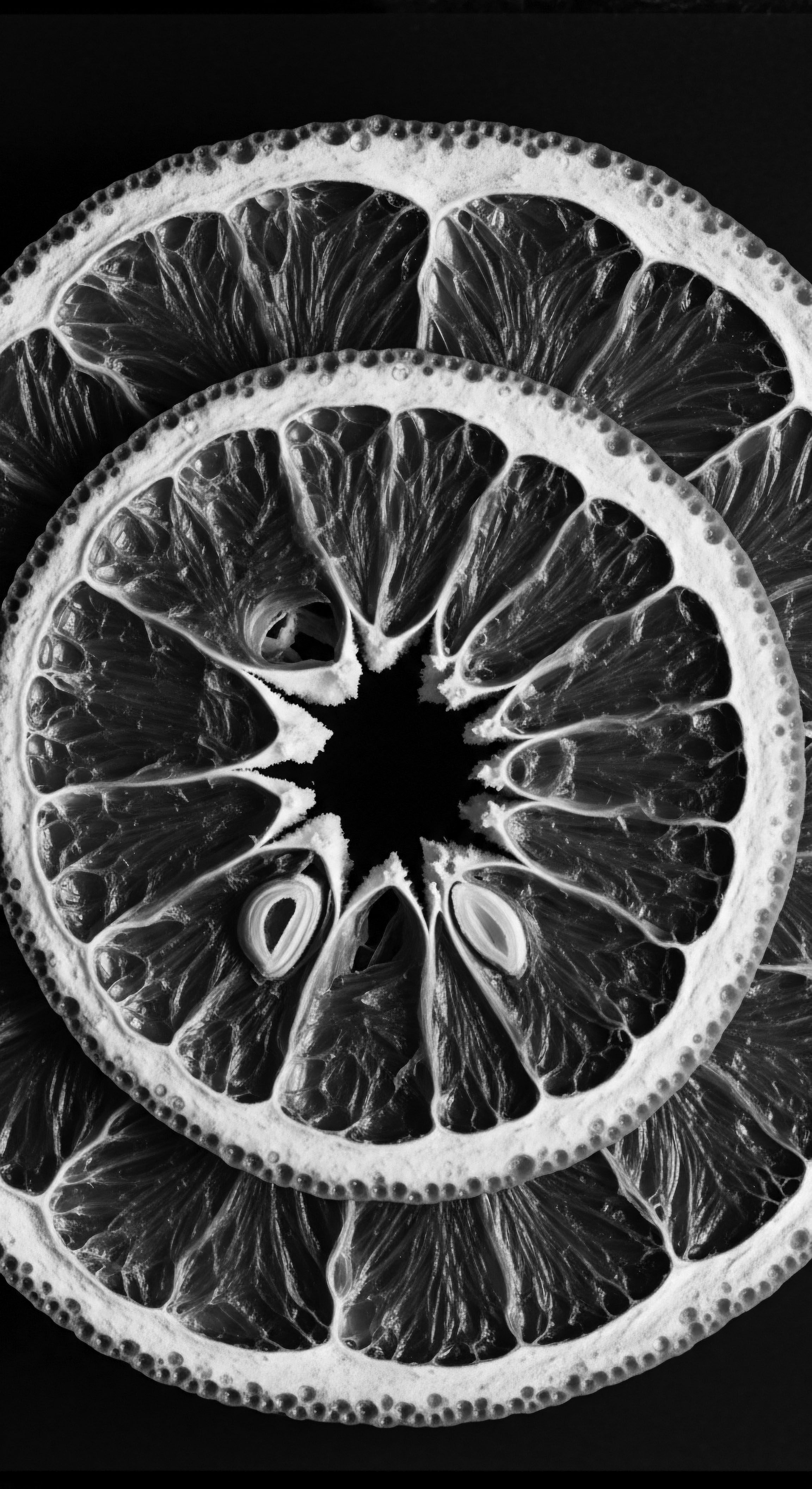
Reclamation and Resistance ❉ A Cultural Rebirth
The mid-20th century witnessed a powerful cultural awakening, with the Civil Rights and Black Power movements serving as catalysts for a profound re-evaluation of Black identity, including the aesthetics of hair. The Afro, in particular, became a potent symbol of defiance, self-acceptance, and racial pride. It was a visible rejection of assimilationist pressures and a bold declaration of inherent beauty.
This shift was not merely a change in hairstyle; it was a socio-political statement, challenging established norms and reclaiming a heritage that had been systematically suppressed. The Afro represented a return to the natural, a celebration of what was inherently Black, and a powerful assertion of collective identity.
The natural hair movement stands as a powerful cultural rebirth, rejecting imposed beauty norms and reclaiming a suppressed heritage.
This period also saw the rise of legal challenges against hair discrimination. In workplaces and schools, Black individuals faced disciplinary action or denial of opportunities due to their natural hair. These instances highlight how deeply ingrained the link between textured hair and social status had become, to the point where an individual’s hair could dictate their access to fundamental rights.
The ongoing legislative efforts, such as the CROWN Act in the United States, which prohibits discrimination based on hair texture and protective styles, represent a continued struggle to dismantle these historical biases and ensure equitable treatment for all. These legal battles are not just about hair; they are about affirming the right to self-expression and dismantling systemic racism that has historically used hair as a tool of control.
Contemporary research further underscores the persistent bias. Studies have shown that Black women with natural hairstyles are often perceived as less professional, less competent, and less qualified for job opportunities compared to those with straightened hair (Diers, 2018). This data provides concrete evidence of the lingering effects of historical perceptions, revealing that the link between textured hair and social status, while evolving, remains a tangible reality. The continued need for legislation and advocacy points to the deep-seated nature of these prejudices, requiring ongoing efforts to challenge and transform societal norms.
| Historical Period/Context Pre-Colonial African Societies |
| Dominant Societal Perception of Textured Hair Diverse, intricate, symbolic of lineage, age, marital status, spiritual connection, wealth. |
| Impact on Social Status High status, communal respect, clear identity markers. |
| Historical Period/Context Transatlantic Slave Trade & Colonialism |
| Dominant Societal Perception of Textured Hair "Unruly," "primitive," associated with savagery, dehumanized. |
| Impact on Social Status Systematic denigration, forced conformity, loss of cultural identity, low social standing. |
| Historical Period/Context Post-Emancipation to Mid-20th Century |
| Dominant Societal Perception of Textured Hair "Unprofessional," "unrefined," requiring alteration for respectability. |
| Impact on Social Status Pressure to assimilate via straightening, limited social/economic mobility for those with natural hair. |
| Historical Period/Context Civil Rights/Black Power Era (1960s-70s) |
| Dominant Societal Perception of Textured Hair Symbol of Black pride, resistance, cultural affirmation. |
| Impact on Social Status Contested status; celebrated within Black communities, often discriminated against in dominant society. |
| Historical Period/Context Contemporary Era (Natural Hair Movement) |
| Dominant Societal Perception of Textured Hair Increasingly celebrated, diverse, professional; yet persistent bias remains. |
| Impact on Social Status Growing acceptance and legal protections, but ongoing challenges with workplace discrimination and beauty standards. |
| Historical Period/Context The perception of textured hair has shifted dramatically, from a revered symbol of heritage to a marker of subjugation, and now a powerful statement of self-acceptance and cultural reclamation. |
The enduring strength of textured hair heritage is its ability to adapt, to resist, and to continuously redefine beauty on its own terms. The ongoing journey of textured hair is a vibrant relay race, with each generation picking up the baton, adding their own experiences, and propelling forward the narrative of identity, resilience, and self-worth. This journey is not just about hair; it is about the unwavering spirit of communities that have consistently found ways to celebrate their intrinsic beauty, despite systemic efforts to diminish it.
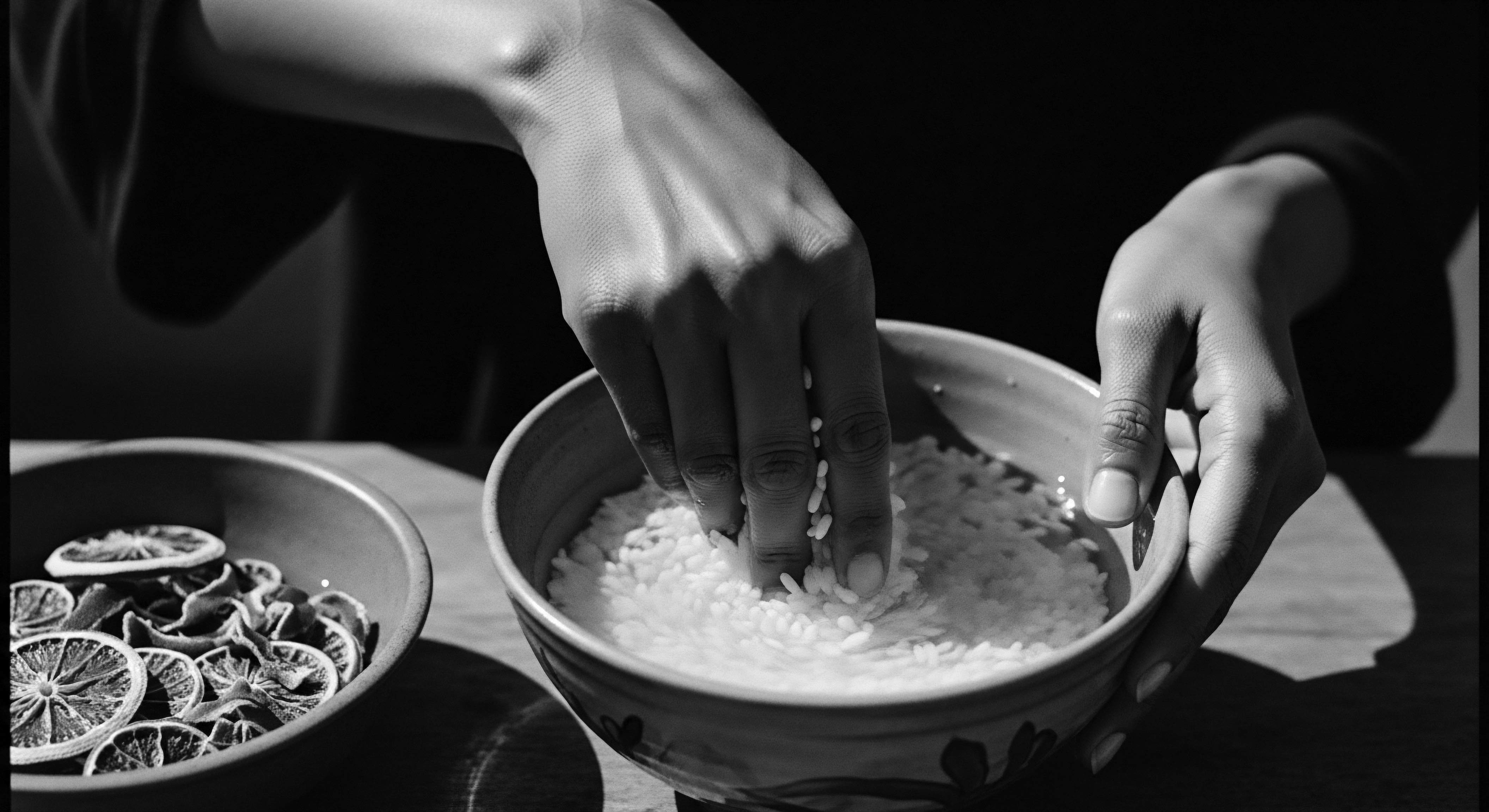
Reflection
The journey through the historical currents linking textured hair to social standing reveals more than just a sequence of events; it uncovers a profound, living archive within each strand. This exploration has been a meditation on the very soul of a strand, acknowledging its biological marvel, its deep ancestral roots, and its enduring role as a cultural compass. From the revered crowns of ancient African royalty to the defiant Afros of the civil rights era, and the diverse expressions of today’s natural hair movement, textured hair has consistently mirrored the triumphs and trials of communities, particularly those of Black and mixed-race lineage.
It stands as a testament to the resilience of identity, a vibrant declaration of heritage that transcends imposed narratives. As we move forward, may we continue to honor this rich legacy, understanding that the care we extend to our hair is not merely a physical act, but a continuation of a sacred tradition, a silent conversation with our ancestors, and a powerful affirmation of self.
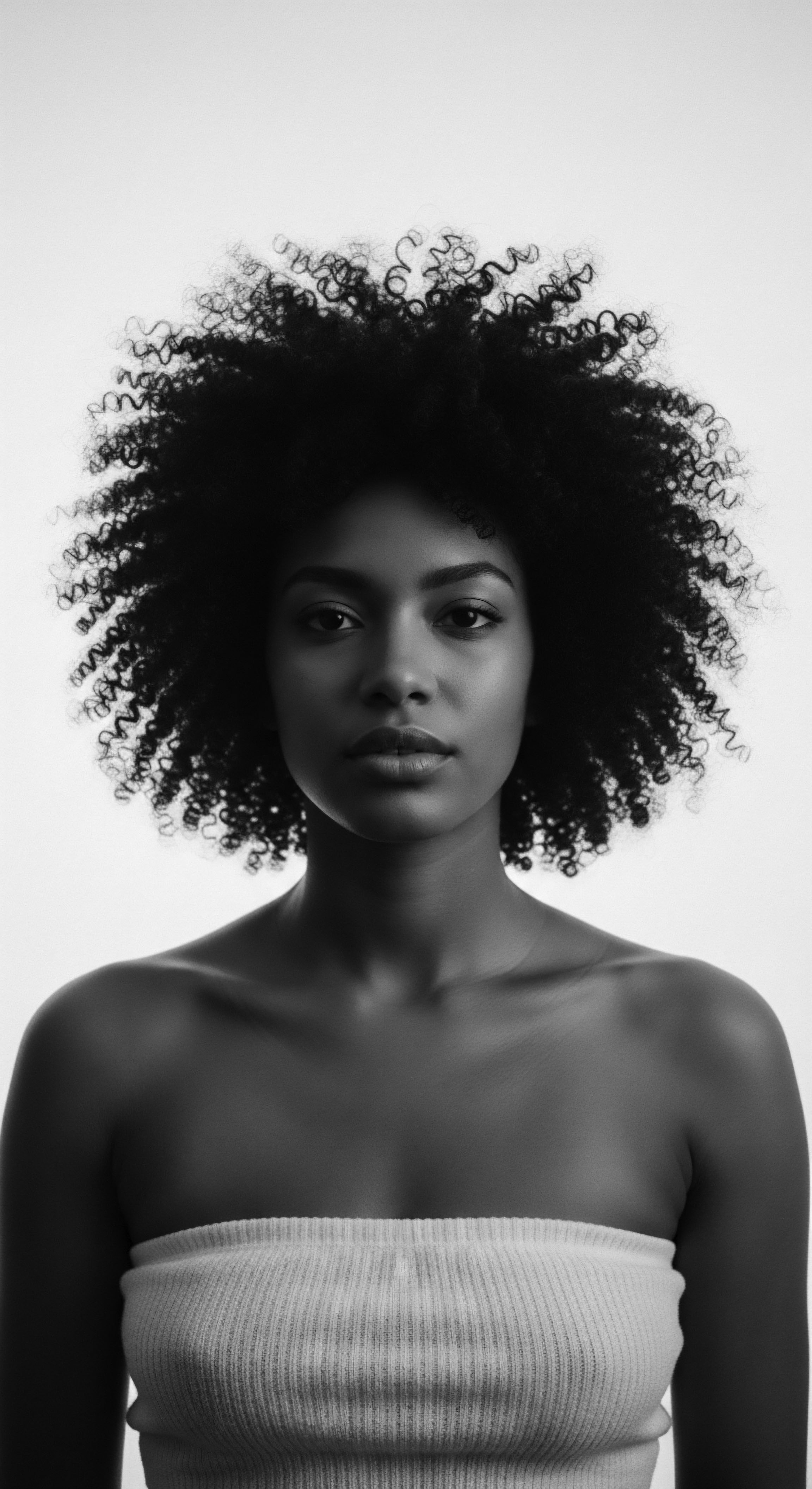
References
- Banks, T. L. (2000). Hair Still Matters ❉ The Legal Implications of Hair Discrimination. Harvard Civil Rights-Civil Liberties Law Review.
- Byrd, A. D. & Tharps, L. D. (2001). Hair Story ❉ Untangling the Roots of Black Hair in America. St. Martin’s Press.
- Diers, J. (2018). Good Hair Study ❉ The Impact of Hair on Black Women in the Workplace. Perception Institute.
- Mercer, K. (1994). Welcome to the Jungle ❉ New Positions in Cultural Studies. Routledge.
- Patton, A. (2006). Afro-Brazilian Hair and Identity ❉ A Social History. University of New Mexico Press.
- Sweet, J. (2007). African Hair ❉ Its Social and Cultural Significance. Wits University Press.
- Tharps, L. D. (2014). The Natural Hair Handbook ❉ The Essential Guide to Caring for and Styling Natural Hair. Atria Books.
